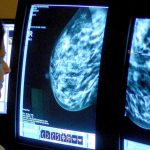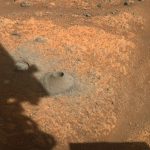The first ever flight on another planet has been delayed until at least 14 April, NASA has said, following the discovery of a technical issue with the Ingenuity mini-helicopter stationed on Mars.
The issue emerged while the device was testing its rotors ahead of what was to be the first ever powered, controlled flight on another planet.
A video released on Twitter ahead of the cancellation showed Ingenuity wiggling while its rotors span at 50rpm, shortly before NASA discovered the technical glitch.
🎶Wiggle, wiggle, wiggle 🎶
With just a little bit of swing, the #MarsHelicopter has moved its blades & spun to 50 rpm in preparation for first flight! Takeoff is slated for April 11, with confirmation expected overnight into April 12 for us Earthlings. https://t.co/TNCdXWcKWE pic.twitter.com/EpDZymjP13
A high-speed test of the 1.8kg machine’s rotors ended early this weekend when alarms went off at Ingenuity HQ about a potential issue.
In a statement, NASA confirmed: “The helicopter team is reviewing telemetry to diagnose and understand the issue. Following that, they will reschedule the full-speed test.”
The space agency confirmed that Ingenuity was “safe and healthy” and had successfully sent information to the Perseverance rover and thence back to Earth.
The initial plan was to have Ingenuity hover for approximately 30 seconds and take a picture of the Perseverance, which touched down on Mars in February.
“The laws of physics may say it’s near impossible to fly on Mars, but actually flying a heavier-than-air vehicle on the red planet is much harder than that,” NASA has quipped.
It carries as a memento in tribute to flight pioneers from Earth, a piece of cloth that covered one of the Wright brothers’ aircraft wings. The Wrights have been generally credited with inventing, building, and flying the world’s first successful motor-operated plane, in the early 20th century.
Ingenuity’s launch was also intended to coincide with the 60th anniversary of the flight of the first human in space, Yuri Gagarin, on 12 April 1961.
Mars rover landing – as it happened: Joy at NASA after ‘seven minutes of terror’
Please use Chrome browser for a more accessible video player
Just hours after the flight, Perseverance will downlink Ingenuity’s first set of engineering data, and “possibly” images and video from its zoomable cameras, says NASA.
Using this data, the Ingenuity team will be able to determine whether the first attempt to fly on Mars was a success, and the results will be discussed in a media conference on the same day.
The flight is a challenge because the Martian atmosphere is just 1% of the density of the atmosphere on Earth, meaning the craft may struggle to achieve lift, although it will be assisted by gravity that is just a third as strong as our own.
The little chopper underwent a series of drills simulating the mission in a testing facility in California, including a high-vibration environment to mimic how it will hold up under the launch and landing conditions, and extreme temperature swings such as those experienced on Mars.
The aim is for the helicopter to hover at 3m (10ft) above the surface for around 30 seconds before descending and touching back down.
The autonomous device also has an on-board camera, but does not contain any scientific instruments. NASA aims to develop the drone as a prototype to see if it could be worth attaching scientific sensors to similar devices in future.






















